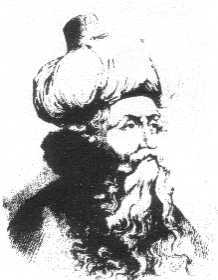“Al-Futuhat Al-Makkiyya: Ibn Arabi’s Spiritual Journey”

الفتوحات المکیہ، یعنی “مکّی وحی”، ابن عربی کا ایک اہم کام ہے جو 1203 سے 1240 کے درمیان لکھا گیا۔ یہ متن ابن عربی کی روحانی سفر، علم الکلام، مابعد الطبیعیات، اور تصوف کا گہرا جائزہ لیتا ہے، جس میں نثر اور شاعری کا ملاپ ہوتا ہے۔
یہ کام خود نوشت پہلوؤں پر مبنی ہے، جس میں ابن عربی کی ملاقاتیں، واقعات، اور روحانی بصیرت کا ذکر ہے۔ یہ ان کی خدا اور مخلوق کے درمیان محبت اور وحدت کے تصورات سے گہرا تعلق رکھتا ہے، جو ان کے نظریات کو ظاہر کرتا ہے۔
ابن عربی نے اس شاندار کام کے دو ورژن تیار کیے۔ پہلا 629 ہجری (تقریباً 1231 عیسوی) میں مکمل ہوا، جبکہ دوسرا ورژن، جو “قونیہ مینوسکرپٹ” کہلاتا ہے، 632 سے 636 ہجری (تقریباً 1235-1239 عیسوی) کے درمیان تیار کیا گیا۔ قونیہ مینوسکرپٹ خاص اہمیت رکھتا ہے کیونکہ اس میں ابن عربی کے خود کے لکھے ہوئے ہاتھ سے لکھے گئے مسودے شامل ہیں، صرف جلد نو کے علاوہ۔ یہ مسودے صدر الدین قونیوی کے وقف کا حصہ ہیں اور مختلف مجموعوں میں محفوظ ہیں۔
“مکّی وحی” صرف اس کی فلسفیانہ گہرائیوں کے لیے ہی نہیں بلکہ اس کی شاعری کی خوبصورتی کے لیے بھی مقبول ہے، جو اسے صوفی ادب اور سوچ کا ایک بنیادی حصہ بناتا ہے۔
مکہ کی وحی ابن عربی کا ایک اہم کام ہے۔ اس میں 37 جلدیں اور 560 ابواب شامل ہیں۔ اس کا عنوان مکہ کی طرف اشارہ کرتا ہے، جہاں ابن عربی نے الہی وحی حاصل کی۔
اس کتاب میں ابن عربی تصورِ تخیل کی وضاحت کرتے ہیں۔ ہنری کوربن اس خیالی دنیا کی وضاحت کرتا ہے۔ یہ متن اللہ کی محبت کے اثرات کو بیان کرتا ہے۔ یہ موضوعاتی اور موضوعی تجربات دونوں کا احاطہ کرتا ہے۔
میشل چودکیویچ اس کتاب کی اہمیت کو اجاگر کرتے ہیں۔ یہ ابن عربی کی تعلیمات کا عروج ہے۔ ابن عربی کے ناقدین میں ابن تیمیہ اور ابن خلدون شامل ہیں۔ ان کے خیالات نے مختلف گروہوں کی جانب سے مخالفت کا سامنا کیا، جن میں وہابی اور جدیدیت پسند شامل ہیں۔
عورتیں “مکہ کی وحی” میں اہم کردار ادا کرتی ہیں۔ باب178 محبت پر مرکوز ہے اور اس میں izam نامی ایک کردار ہے۔ وہ ایک نوجوان فارسی خاتون ہے جو ابن عربی کے روحانی سفر پر اثر انداز ہوتی ہے۔
یہ کام آج بھی اسلامی فکر میں متعلقہ اور متنازعہ ہے۔

Al-Futuhat al-Makkiyya: Overview
Al-Futuhat al-Makkiyya, also known as The Meccan Revelations, is a significant work by the philosopher and Sufi Ibn Arabi, composed between 1203 and 1240. This text is notable for its exploration of Ibn Arabi’s spiritual journey, theology, metaphysics, and mysticism, blending prose and poetry throughout its chapters.
The work is structured around autobiographical elements, detailing Ibn Arabi’s encounters, events, and spiritual insights. It reflects his deep engagement with the concepts of divine love and unity, showcasing his unique perspective on the relationship between the Creator and creation.

Ibn Arabi produced two versions of this magnum opus. The first was completed in the year 629 of the Hijra (approximately 1231 CE), while the second version, known as the Konya Manuscript, was developed between 632 and 636 of the Hijra (approximately 1235-1239 CE). The Konya Manuscript is particularly important as it includes handwritten manuscripts by Ibn Arabi himself, with the exception of volume nine. These manuscripts were part of the waqf (endowment) of Sadr al-Din al-Qunawi and are currently preserved in various collections.
The Meccan Revelations is revered not only for its philosophical depth but also for its poetic beauty, making it a cornerstone of Sufi literature and thought.
The Meccan Revelations is a significant work by Ibn Arabi. It consists of 37 volumes and 560 chapters. The title refers to Mecca, where Ibn Arabi received divine revelations.
In this book, Ibn Arabi explores the theory of imagination. Henry Corbin explains this imaginary world. The text describes the effects of Allah’s Love. It covers both subjective and objective experiences.

Michel Chodkiewicz highlights the book’s importance. It represents the culmination of Ibn Arabi’s teachings. Critics of Ibn Arabi include Ibn Taymiyyah and Ibn Khaldun. His ideas faced opposition from various groups, including Wahhabis and modernists.
Women play a vital role in The Meccan Revelations. Chapter 178 focuses on love and features a character named Nizham. She is a young Persian woman who influences Ibn Arabi’s spiritual journey.
This work remains relevant and controversial in Islamic thought today.

References
- Introduction to The Meccan Revelations on Ibnarabisociety
- Read Secret Practices of the Sufi Freemasons Online by Baron Rudolf von Sebottendorff | Books.
- Jump up to:a b c d e f g “al-Futuhat al-Makiyya Printed Editions”. Muhyiddin Ibn Arabi Society. Retrieved 31 August 2022.
- Constant Hamès, Ibn Arabî, Les Illuminations de La Mecque (compte rendu), Archives de sciences sociales des religions, 1990, Vol. 72, N°1, p. 266-267.
- Henry Corbin, L’imagination créatrice dans le soufisme d’Ibn Arabi.
- Michel Chodkiewicz (1997). Avant-propos in Les Illuminations de La Mecque (in French). Paris: Albin Michel. p. 10..
- Campo, Juan Eduardo (2009). Encyclopedia of Islam. Infobase Publishing. p. 327. ISBN 978-1-4381-2696-
External links
- Theophanies and Lights
- “Tajalli تَجَلِّي”. Islamic Encyclopedia. 2014. Archived from the original on 18 June 2016. Retrieved 17 July 2023.
Post Comment